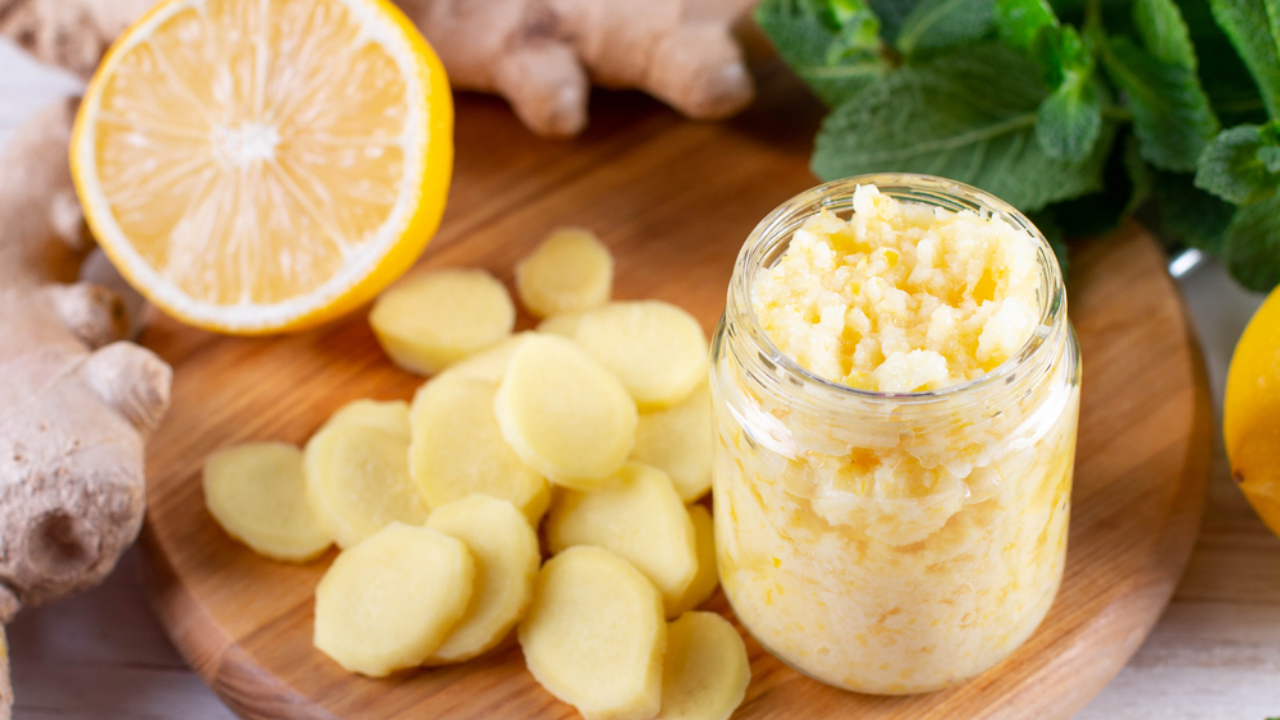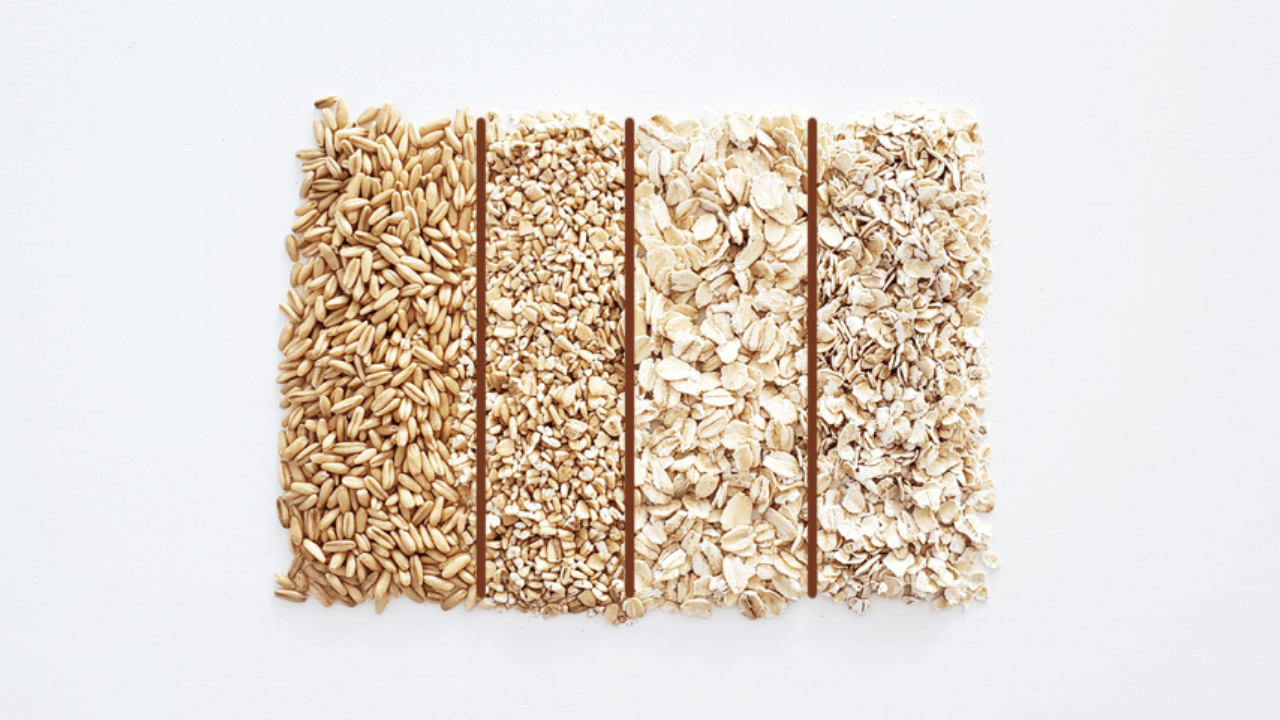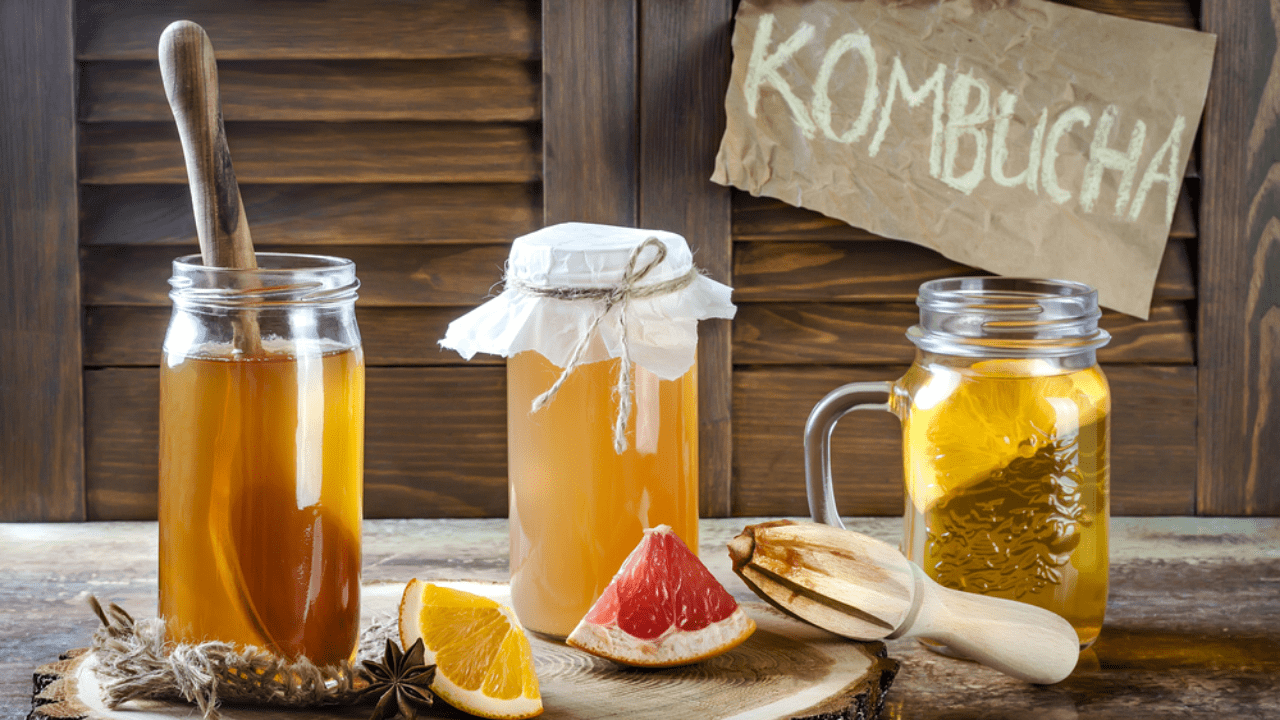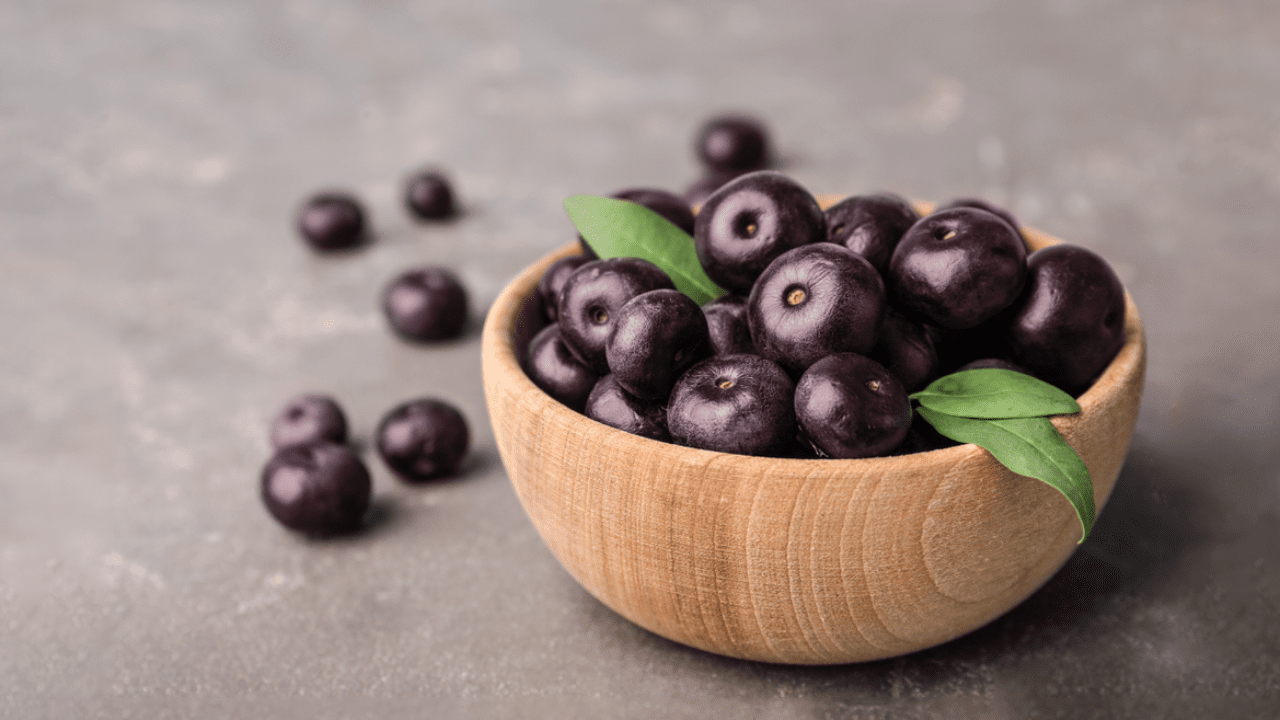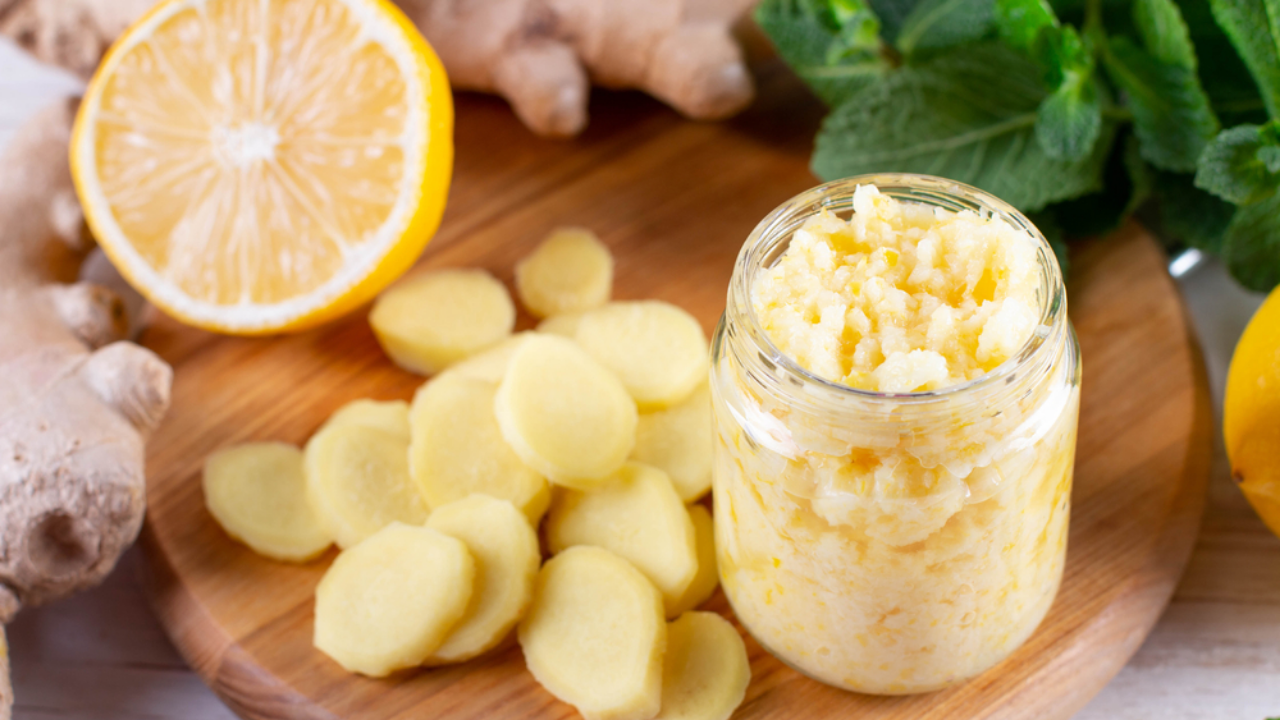
Ginger is a flowering plant in the Zingiberaceae family. Its underground rhizome, known as ginger root, is commonly used as a spice or in folk medicine. The ginger rhizome comes in yellow, white, or red varieties, with a textured & sometimes thick skin. It has a strong, aromatic, & spicy flavor that enhances Asian stir-fries, fruit, & vegetable dishes. Fresh ginger root can be found year-round in local markets & is rich in vitamin C, magnesium, potassium, copper, & manganese.
Some facts:
- The ginger root is not a root, but a rhizome.
- The major producers of Ginger today are China & tropical/subtropical places in Asia, Brazil, Jamaica, & Nigeria.
- The ginger plant is approximately 30 - 60 cm tall & is extremely rare to find in the wild
- Ginger is a pungent & hot spice that intensifies over time. When ginger is dried or crushed, its strong taste softens, resulting in a different flavor profile.
NUTRITIVE VALUE OF GINGER ROOT (RAW) NUTRITIVE VALUE PER 100 GMS:
| Energy (kcal) | 80 |
| Fat (g) | 0.75 |
| Protein (g) | 1.82 |
| Cholesterol (mg) | 0 |
| Carbohydrates (g) | 17.77 |
| Sugar (g) | 1.7 |
| Dietary fibre (g) | 2 |
| Vitamin B6 (mg) | 0.16 |
| Vitamin C (mg) | 5 |
| Magnesium (mg) | 43 |
| Potassium (mg) | 415 |
BENEFITS OF GINGER:
Ginger has a rich history in traditional & alternative medicine practices spanning many centuries. It has been used to help digestion, reduce nausea & help fight common cold & flu. Historically, ginger has a long tradition of being very effective in alleviating symptoms of gastrointestinal distress. In herbal medicine, ginger is regarded as an excellent carminative (a substance which promotes the elimination of intestinal gas) & intestinal spasmolytic (a substance which relaxes & soothes the intestinal tract). Modern scientific research has revealed that ginger possesses numerous therapeutic properties including antioxidant effects, an ability to inhibit the formation of inflammatory compounds, & direct anti-inflammatory effects. Let us look at some of its benefits:
-
NAUSEA AND VOMITING: Ginger appears to be highly effective against nausea. But it may be the most effective when it comes to pregnancy-related nausea such as morning sickness. It has a long history of use as a sea sickness remedy, & there is some evidence that it may be as effective as prescription medication. Ginger may also relieve nausea & vomiting after surgery, & in cancer patients undergoing chemotherapy.
-
GASTROINTESTINAL RELIEF: Ginger is very effective in eliminating gastrointestinal distress offered in recent double-blind studies, which demonstrated that ginger prevents the symptoms of motion sickness, especially seasickness.
-
IMMUNE BOOSTING ACTION: In addition to providing warmth on cold days, ginger has the ability to promote healthy sweating, which can be beneficial for relieving symptoms of colds & flu. Ginger contains a high concentration of the active compound called gingerol. This means that even a small amount of ginger can provide significant beneficial effects.
It protects against invading microorganisms, including bacteria such as Coli & Staphylococcus aureus (a common cause of skin infections) & fungi, including Candida albicans -
ANTI-INFLAMMATORY EFFECTS: Regular consumption of ginger, rich in potent anti-inflammatory compounds called gingerols, may lead to a reduction in pain levels & improved mobility for individuals suffering from osteoarthritis or rheumatoid arthritis. For Arthritis, some people have found relief as little as consuming 1/4-inch slices of fresh ginger cooked in food.
-
MENSTRUAL PAIN: Some research shows that ginger can reduce symptoms of menstrual pain in women. It seems to work about as well as the medication ibuprofen or mefenamic acid.
-
CANCER AND DIABETIC FIGHTER: Ginger's anti-inflammatory properties make it potentially beneficial for various chronic inflammatory diseases, including cancer. Research suggests that ginger exhibits anti-tumour activity, which may be particularly helpful in combating challenging types of cancer such as lung, colon, ovarian, breast, skin, & pancreatic cancer.
-
WEIGHT LOSS: Ginger is a metabolism-boosting substance that may temporarily increase thermogenesis in your body, where your body burns stored fat to create heat, with beneficial impacts on overall metabolism & fat storage.
BEST WAY TO CONSUME:
The usage of ginger depends on the purpose. For serious issues, consult an experienced natural health practitioner for guidance on dosages & forms. Some examples as below:
- Ginger extract: It may be needed for potent medicinal properties
- Fresh or dried ginger: It has therapeutic benefits. .Scrape off the thin skin using the back of a spoon.
- Ginger Tea: Ginger tea is a popular choice for consumption.To make ginger tea, chop a couple of inches of ginger root & steep it in hot water. Peel the root with a paring knife & slice it thinly, grate it, or mince it to add to tea or cooked dishes.
- Stir-fries & Soups: Ginger can be added to stir-fries & homemade chicken soup. Almost every stir fry could use a little grated or minced ginger to spice things up.
- You can also cut, grate, or pound the ginger to incorporate into soups, sauces, & stews.Fresh ginger, grated or pureed, brings wonderful zest to hot, creamy soups.
- Iced Tea: Mixing a teaspoon of organic powdered ginger into a gallon of iced tea can enhance flavor & potential health benefits.
- Seasoning: Adding spicy ginger to tender, flaky fish gives aromatic flavor & tastes.
- Desserts: Adding fresh ginger to lots of sweet things gives a great taste & flavor.
TWO SIMPLE GINGER RECIPES TO TRY:
1. GINGER TEA
INGREDIENTS:
- Cardamom - 2 pinch
- Fennel seeds - 2 pinch
- Ginger (fresh) - 1/4 inch
METHOD:
Step 1 Mash ginger in a mortar & pestle or chop.
Step 2 Grind cardamom & fennel using a mortar & pestle or coffee grinder.
Step 3 Place in the cup. Pour boiling water over ingredients & steep, covered, for three minutes.
Step 4 Strain & serve.
2. CANDIED GINGER
INGREDIENTS:
- 1/2 pound fresh ginger
- 1/2 cup sugar
METHOD:
Step 1 Peel the ginger & cut it into the thinnest possible slices using a mandolin or chef's knife.
Step 2 Place the slices in a medium saucepan & cover with enough water to submerge them.
Step 3 Bring to a boil, then turn the heat down to medium-low, cover, & simmer until tender.
Step 4 The slices will be a deeper shade of yellow & have a more rubbery consistency.
Step 5 Reserve 1/4 cup cooking liquid & drain
Step 6 Return the ginger to the pot along with the reserved cooking liquid & the sugar.
Step 7 Bring to a rapid simmer over a high flame.
Step 8 Turn the heat down to medium & continue to simmer the ginger, stirring frequently, until the liquid has evaporated & the sugar begins to crystallize about 10 to 15 minutes.
Step 9 Transfer the ginger immediately to a cooling rack or parchment-lined sheet pan.
Step 10 Spread in an even layer until cool enough to touch.
Step 11 Discard the excess ginger sugar or reserve it for another use.
Step 12 Store the candied ginger in an airtight container for up to three weeks.
In summary, ginger is a powerful spice with numerous health benefits. It has anti-inflammatory properties, aids in pain relief & mobility for arthritis patients, improves digestion, combats nausea, & potentially has anti-cancer properties. Adding ginger to your daily routine can support your overall health.



